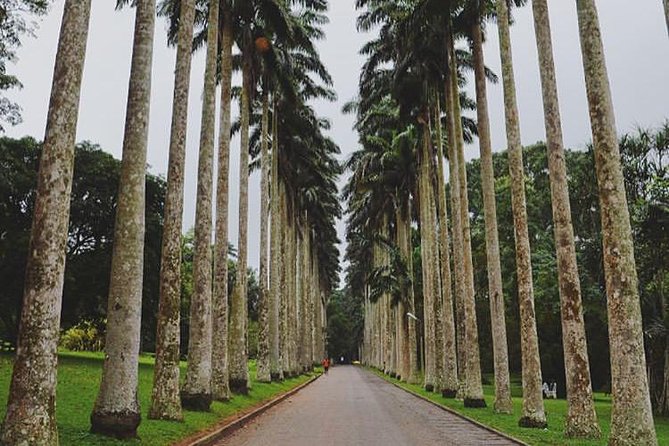Explore A Glimpse into Ghana’s Colonial History and Ghana Horticultural Haven
Fort San Sebastian, situated in the coastal town of Shama in the Western Region of Ghana, stands as a tangible relic of the nation’s colonial past. This well-preserved fortification provides a fascinating journey back in time, offering visitors a glimpse into the historical narratives of European influence and trade along the Gold Coast. Join us as we explore the rich history, architectural significance, and cultural heritage encapsulated within the walls of Fort San Sebastian.
History and Construction:
Fort San Sebastian, commonly known as Shama Fort, was constructed by the Portuguese in the early 16th century. The fort’s strategic location along the Gulf of Guinea served the dual purpose of facilitating trade and providing a defensive stronghold against rival European powers and indigenous forces.
The original fort, built with stone and laterite, underwent several modifications over the centuries. The Dutch, who seized control from the Portuguese in 1640, significantly expanded and strengthened the fort. The current structure reflects Dutch architectural influences and design elements.
Architectural Features:
Fort San Sebastian boasts distinctive features that characterize Dutch military architecture of the 17th century:
- Star-Shaped Design: The fort is renowned for its star-shaped layout, a strategic design that allowed for optimal defense and coverage of the surrounding areas. Each point of the star served as a bastion, enhancing the fort’s ability to withstand attacks.
- Cannons and Ramparts: The fort is equipped with cannons strategically positioned along its ramparts, emphasizing its military function. The placement of cannons aimed at the sea and the land underscores the fort’s dual role in defending against both naval and terrestrial threats.
- Living Quarters and Storage: Within the fort, one can explore the remnants of living quarters for soldiers, storage rooms, and other functional spaces. These areas provide insights into daily life within the fort during its active periods.

European Rivalries and Shifting Allegiances:
The Gold Coast, known for its abundance of gold and other valuable resources, became a focal point for European colonial powers. Fort San Sebastian witnessed the ebb and flow of control between the Portuguese, Dutch, and, later, the British. The fort changed hands multiple times, with each colonial power leaving its imprint on the structure.
Visiting Fort San Sebastian:
Today, Fort San Sebastian stands as a historical monument open to the public. Visitors can explore the well-preserved fortifications, walk along the ramparts, and imagine the bustling activities that once took place within its walls. The site provides a unique opportunity to connect with Ghana’s colonial history and appreciate the architectural prowess of the past.
How to Reach:
Fort San Sebastian is easily accessible from Takoradi, the capital of the Western Region. It is approximately a 30-minute drive from Takoradi to Shama.

Preserving Cultural Heritage:
Fort San Sebastian serves as a testament to Ghana’s resilience, cultural diversity, and historical evolution. The conservation of such sites is vital for fostering an understanding of the complex interplay between different cultures and the enduring legacies of the past. As visitors traverse the grounds of Fort San Sebastian, they embark on a historical journey that unfolds the layers of Ghana’s colonial history, making it a significant destination for those passionate about heritage and culture.
Aburi Botanical Gardens: Exploring Ghana Horticultural Haven
Nestled in the scenic hill town of Aburi, Ghana, the Aburi Botanical Gardens stands as a testament to the country’s commitment to preserving and showcasing its rich botanical heritage. Established in 1890, the gardens have evolved into a horticultural haven, attracting nature enthusiasts, researchers, and visitors seeking tranquility amid lush greenery. In this article, let’s take a stroll through the Aburi Botanical Gardens and explore the beauty and significance it holds.
Location and History:
Situated approximately 30 kilometers north of Accra, the capital city of Ghana, the Aburi Botanical Gardens occupy an elevated position in the Akuapim-Togo mountain range. The gardens were founded during the colonial era by Governor William Brandford-Griffith and Lady Adelaide Smith, with the aim of cultivating and researching tropical plants.
Botanical Diversity:
Spanning over 64.8 hectares, the Aburi Botanical Gardens boast a diverse collection of plants, including indigenous and exotic species. The gardens serve as a living laboratory for the study and conservation of tropical flora. Visitors can explore themed sections that showcase medicinal plants, palms, orchids, and more. Notable trees, such as the towering silk cotton tree and the umbrella tree, add to the arboreal wonders of the gardens.

Historical Structures:
The gardens are adorned with historical structures that add to their charm. The curator’s house, an architectural gem, stands as a reminder of the colonial era. The orchid house, built-in 1895, houses a captivating collection of orchid species. Walking through these structures is like stepping back in time, offering a glimpse into the gardens’ rich history.
The Palm-lined Avenue:
One of the most iconic features of the Aburi Botanical Gardens is the picturesque palm-lined avenue. Towering royal palms flank the pathway, creating a majestic canopy. This scenic avenue provides a captivating setting for leisurely strolls and serves as a popular spot for photography enthusiasts.
Conservation and Education:
The gardens play a crucial role in conservation and education. Through its plant conservation program, the Aburi Botanical Gardens actively contributes to the preservation of endangered plant species. Educational programs and guided tours are conducted to enhance visitors’ understanding of the importance of biodiversity and sustainable practices.
Recreational Activities:
Beyond its botanical significance, the Aburi Botanical Gardens offer a serene environment for recreation. Families, couples, and nature lovers often visit to enjoy picnics, birdwatching, and simply unwinding amid nature’s beauty. The gardens provide a welcome retreat from the hustle and bustle of city life.

Events and Festivals:
Throughout the year, the Aburi Botanical Gardens host various events and festivals. Flower shows, horticultural exhibitions, and cultural celebrations bring the gardens to life, attracting both locals and tourists. These events contribute to the vibrant atmosphere of the gardens and showcase the diverse cultural tapestry of Ghana.
Visitor Information:
- Opening Hours: The gardens are open daily from 8:00 AM to 5:00 PM.
- Entrance Fee: A nominal entrance fee is charged for visitors.
- Guided Tours: Knowledgeable guides are available to lead informative tours.
Conclusion:
The Aburi Botanical Gardens stands as a verdant oasis, celebrating the beauty and importance of botanical diversity. Whether you’re a plant enthusiast, a history buff, or someone seeking a tranquil escape, the gardens offer a captivating experience. As the flora flourishes and the gardens continue to evolve, they remain a testament to Ghana’s commitment to environmental stewardship and the celebration of nature’s wonders.
